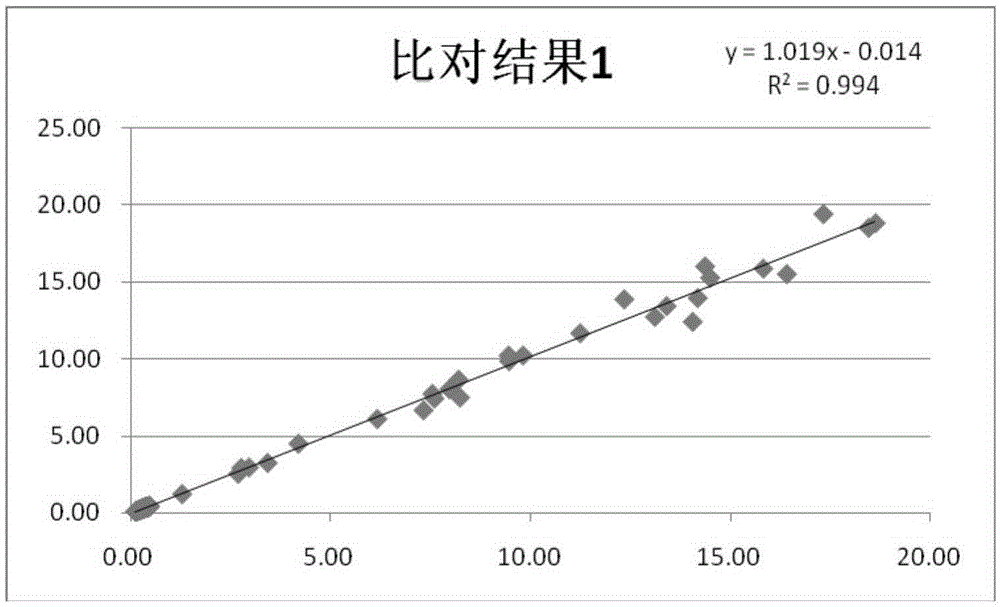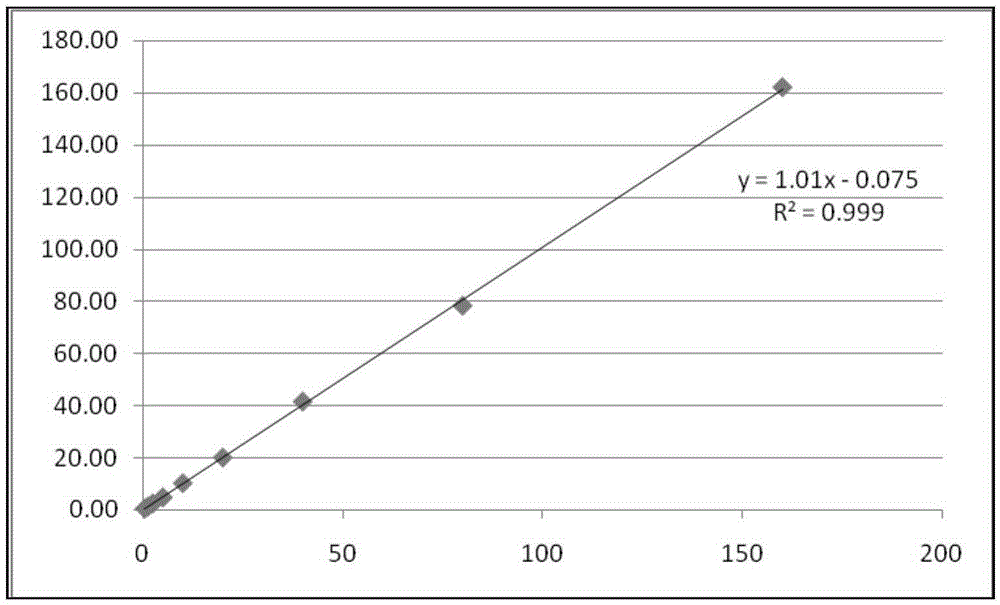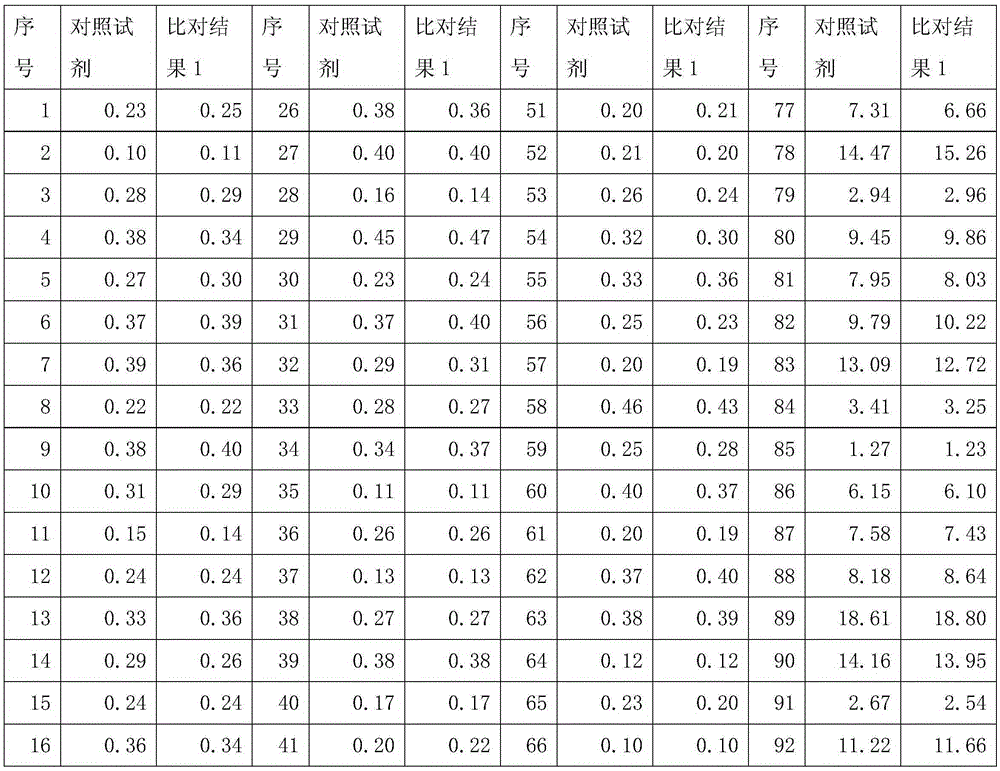Preparation method of kit for measuring glycocholic acid content in human body
A glycocholic acid and kit technology, applied in the field of biochemistry, can solve the problems of low value repeatability, low sensitivity, radioactive contamination, etc., and achieve the effects of improved repeatability and accuracy, strong anti-interference, and improved signal strength.
- Summary
- Abstract
- Description
- Claims
- Application Information
AI Technical Summary
Problems solved by technology
Method used
Image
Examples
Embodiment 1
[0046] Example 1 Preparation of Hepatic Bile Acid-Protein Conjugate
[0047] 1. Reagent preparation:
[0048] Liquid A: Accurately weigh 2 mg of glycocholic acid, and dissolve it in 100 μl of DMF reagent; Liquid B: prepare 89.4 mg / mL NHS solution with DMF; Liquid C: prepare 60.2 mg / mL DCC (dicyclohexylcarbon Diimine) solution; solution D: Weigh 16 mg of BSA (bovine serum albumin), and dissolve it in 1 mL of 0.02 mol / L phosphate buffer solution with a pH of 7.2.
[0049] The phosphate buffers in the examples of the present invention are all selected from commercially available disodium hydrogen phosphate-sodium dihydrogen phosphate or dipotassium hydrogen phosphate-potassium dihydrogen phosphate buffer.
[0050] 2. Reagent configuration:
[0051] 1. Take 30.7 μL of liquid B and liquid C respectively, add to 100 μl of liquid A, and stir at room temperature for 90 minutes.
[0052] 2. Add the stirred mixed solution into D solution and mix vigorously, and stir at 4°C for 12 hou...
Embodiment 2
[0056] Embodiment 2 Preparation of glycocholate monoclonal antibody
[0057] 1. Preparation
[0058] BalB / c mice were subcutaneously immunized with KLH protein-coupled CG (BalB / c is a commercially available mouse species). After four times of immunization (one initial immunization and three booster immunizations), the immune effect was ideal (identified by indirect ELISA method) After immunization, the splenocytes of BalB / c mice whose serum titer is greater than 10,000) were fused with SP2 / 0 myeloma cells (provided by ATCC), and monoclonal glycocholic acid was obtained by screening with BSA-CG plates (existing equipment) cell antibodies.
[0059] 2. Screening and identification of hepatobiliic acid monoclonal antibodies
[0060] To identify the small molecule monoclonal antibody, select "BSA-CG coated ELISA plate" to pass the competition ELISA experiment, and the antibody that has a competitive inhibition reaction with free CG is the monoclonal antibody specific to CG. The ...
Embodiment 3
[0061] Example 3 Preparation of hepatic bile acid-protein antibody and latex reactant
[0062] 1. Put 1.5g latex particles (this particle is a core-shell structure, its milk core is a polystyrene polymer, and the milk shell is made up of styrene, n-butyl acrylate and methacrylic acid copolymer, and the chemical groups carried on its surface Different ones can be selected from carboxyl, amino, hydroxyl, hydrazide, and chloromethyl modification; the latex particle diameter range is 100-450nm, which can be purchased from the market, such as the model provided by JSR company is P0220 type carboxyl microspheres) adding PH 5.5, the concentration is in 150ml of 2-morpholinoethanesulfonic acid buffer solution of 80 mmol / L, stirred for 30 minutes;
[0063] 2. Add 20 ml of carbodiimide (concentration: 0.067 mg / ml) and 20 ml of N-hydroxysuccinimide (concentration: 0.033 mg / ml) to the above solution, and react for 45 minutes.
[0064] 3. Centrifuge the above mixture at 15,000 rpm for 15 ...
PUM
| Property | Measurement | Unit |
|---|---|---|
| diameter | aaaaa | aaaaa |
| wavelength | aaaaa | aaaaa |
Abstract
Description
Claims
Application Information
 Login to View More
Login to View More - R&D
- Intellectual Property
- Life Sciences
- Materials
- Tech Scout
- Unparalleled Data Quality
- Higher Quality Content
- 60% Fewer Hallucinations
Browse by: Latest US Patents, China's latest patents, Technical Efficacy Thesaurus, Application Domain, Technology Topic, Popular Technical Reports.
© 2025 PatSnap. All rights reserved.Legal|Privacy policy|Modern Slavery Act Transparency Statement|Sitemap|About US| Contact US: help@patsnap.com



